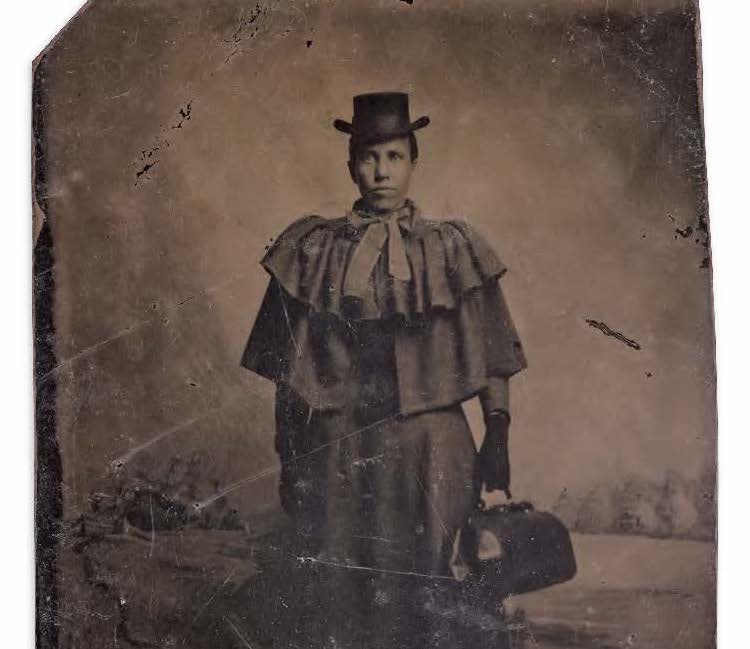By Lisa Kraege, Humanities Council
When faced with the brutality of archives of colonial and historical medicine, how can scholars practice care, both for themselves and the subjects depicted therein? On Thursday, May 6, Art Hx gathered panelists from around the world to speak to this and other questions, in a panel titled “Observing the Past: Archives, Interpretation, and Practices of Care.” Art Hx is a digital database of images of art and colonial medicine, led by Professor of Art and Archaeology Anna Arabindan-Kesson. Art Hx is sponsored by a Humanities Council Rapid Response grant and the Addressing Racism Funding Initiative.
Jessica Womack, a PhD candidate in Art and Archaeology and one of the students involved in the creation of Art Hx, introduced the panelists. Arabindan-Kesson and Womack acted as moderators for the discussion.
Dr. Edna Bonhomme, who received her PhD from Princeton in the History of Science, called in from Berlin, where she now lives and teaches. Bonhomme shared several historical cases of epidemics, elucidating how medicine has always been highly racialized. “As a historian of science I’m very much interested in thinking actively about the ways in which the history of epidemics impacts our abilities to access medicine and in some cases, how that impacts the extent to which we get sick,” she said.
In one example, she described the treatment of cholera outbreaks on plantations in mid–nineteenth century Mississippi. Treatment of enslaved people was aimed not at eradicating the disease or installing lasting solutions but rather minimizing loss of labor. “Health was not a policy dictated by the state but an ill-formed pastiche of remedies and messages that didn’t get to the core of the disease,” she explained. Bonhomme cited the narratives of Reverend Peter Randolph and Harriet Jacobs as sites of resistance. “Slave narratives give us the opportunity to look beyond the draconian measures of isolation and the legal restrictions of movement, and to see what is possible when one becomes free,” she said.
Dr. Ruth de Souza joined the panel from Australia, where she is a practicing nurse as well as an academic. De Souza shared an image from the Art Hx database that she said had prompted her to think about her own experience in medicine, “A medical missionary attending to a sick African.” Part of practicing care for de Souza is recognizing the ways in which colonial medical practices still affect modern medicine. She explained that the image foregrounds the idea of the white savior and ignores the potential knowledge of the local people also present in the image. “My profession of nursing is not only an altruistic enterprise, but is complicit with biomedicine and the advancement of colonialism and imperialism,” she said. “We need to move away from individualizing, culturalizing, and racializing medicine towards collaborative models.”
The panel also brought in two staff members from the Princeton Library: Phoebe Nobles, archivist at Princeton’s Seeley G. Mudd Manuscript Library; and Emma Sarconi, member of the Special Collections public services team and co-organizer of the Humanities Council’s Archival Silences working group.
For Nobles, part of practicing care in the archive means making sure subjects are properly named and records don’t uphold damaging associations. She shared an example from Princeton’s own history, showing images of a case she had worked on with the Inclusive Description Working Group within Special Collections. Various images in the archive had misidentified James Johnson, who worked on Princeton’s campus in the 1830s, as “Unidentified man” or “Jimmy Stink,” a derogatory nickname given to him by Princeton students. The record was changed to reflect his name, and the nickname was moved to the image description so that it would still be searchable with finding aids. “Our main goal is to describe archival materials in a manner that is respectful to the individuals and communities who create, use, and are represented in the collections we manage,” she said.
Sarconi spoke about issues of authority in the archive. She shared a tintype of a woman carrying a medical bag from the Art Hx database, showing that the source record of the image, from the Smithsonian, lists the subject as “Unidentified” but notes in the caption that the woman “bears a strong resemblance to Dr. Sarah Loguen Fraser (1850-1933),” who was the fourth female African American doctor in the U.S. Sarconi explained that because this information isn’t confirmed, the image wouldn’t come up when Fraser’s name is searched, foreclosing the possibility of confirmation or correction. “All too often the infrastructure of the archive has the lens of absolute authority,” she said. “How can our archival library systems better hold the possibilities that they embody?” And crucially, she asked, “is a less authoritative archive even possible?”
The discussion with all of the panelists highlighted how practices of care can be both scholarly and also deeply personal, oftentimes inseparably. De Souza cited community as the way to challenge institutional burnout. “I keep going back to working collectively with people to support each other,” she said. And while the hierarchical institutions of archive, university, or hospital are built on imbalances of power, Bonhomme noted, “even being able to ask the questions is a start.”
















